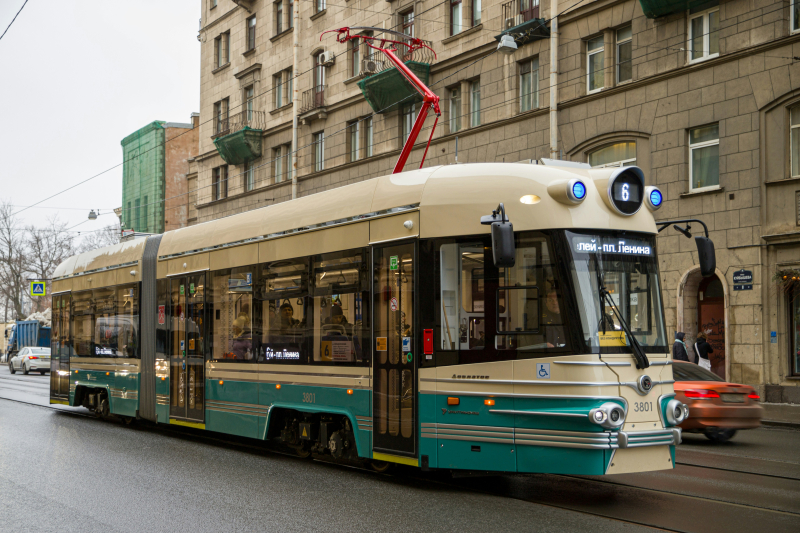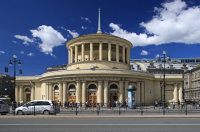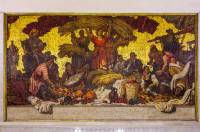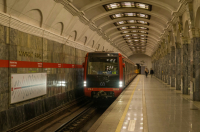Choose your pass
BSK
Students of higher education institutions in St. Petersburg are eligible for a special student travel card, BSK (БСК). Covering both metro and ground transport, it provides the most affordable option for using public transport around the city.
In 2024, the monthly fees are as follows: 740 rubles for a metro-only card with 100 rides included, 655 rubles for an unlimited plan for above-ground transport, and 1,305 rubles for a combined (metro + ground transport) plan.
As an ITMO student, you must first upload your personal information to the special section of ISU. From September 1 to September 30, you can obtain a temporary pass at any metro ticket office by showing your passport and student ID. After that, you can apply for a personalized card through one of these methods:
-
Online (in Russian)
Fill in your personal data, upload a 3x4 photo, and choose the metro station where you’d like to pick up the card. In 20 days, visit the station with your passport and student ID.
-
At a metro ticket office
Present your passport, student ID, and a 3x4 cm photo at any metro ticket office and return to the same office in 20 days to receive your personalized card and hand in your temporary card.
Get in touch with ITMO’s Student Services Office in case you need help.
Podorozhnik
An alternative for non-students, Podorozhnik is a card with an e-wallet payment plan. The card itself costs 80 rubles (100 rubles as a key fob), you can acquire one at any metro station, as well as official St. Petersburg Metro offices at Rubinstein St. 32 and Lenina Square 8/8, and at the special kiosk at the Pulkovo airport.
As of 2024, one metro ride with Podorozhnik will cost 49 rubles, and the price of taking a tram, bus, or trolleybus is 44 rubles only. If you need to change between several means of transport within a short period, in addition to the simple e-wallet payment plan, there are several time-based tariffs:
-
The 60-minute rate
Every time you pay for your ride on ground transport, the 60-minute rate will automatically be activated. This means that your first ride on ground transport will cost you 44 rubles, the second – 10 rubles, and the third one will be free – as long as it was taken within 60 minutes from the first ride. This offer doesn’t extend to the metro; moreover, your ride counter will “reset” upon using the metro.
-
The 90-minute ticket
The special ticket costing 78 rubles gives you one metro ride and an unlimited number of ground transport rides within 90 minutes. Please note that you will have to buy it separately at a metro station or a special kiosk. These tickets will be uploaded to your Podorozhnik card.
Find more tariffs here.
Need to top up your BSK or Podorozhnik? Here are the most convenient options:
-
By cash or card at any metro ticket office;
-
By cash or card at special terminals located at each metro station (available in English);
-
Via the kartplata website.
Bank card
Turnstiles in the metro and validators on ground transport accept bank cards from Visa, Mastercard, and the MIR payment system. However, we recommend always having your Podorozhnik or BSK loaded and using your bank card only as an emergency. The reason for this are higher fees: you’ll pay 70 rubles for a single metro ride and 65 rubles for above-ground transport if you use your bank card.
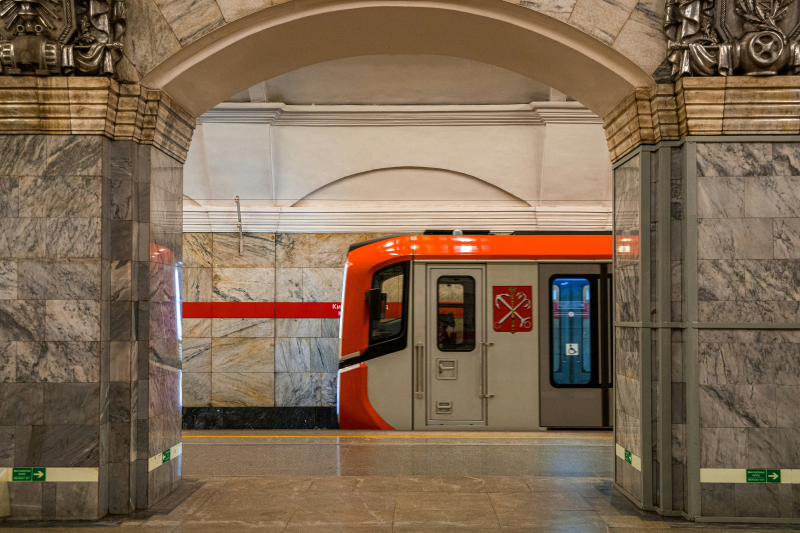
Credit: Namzhil Chimitov (@nmzhlk) via Unsplash
Useful tips
Riding the metro
St. Petersburg metro is a piece of cake compared to the one in Moscow, but it still takes time to learn all the stations by heart and build the fastest route to your destination. Luckily, you can rely on Yandex.Metro (it even shows the best train car to enter). The service is available online or as an app (App Store, Google Play).
Read also
Secret Rules of Russian Public Transport
Exploring the St. Petersburg Metro
Digging Deeper: Literary Origins of St. Petersburg Metro Stations
Taking ground transport
On ground transport, which includes buses, trolleybuses, and trams, you can pay with your credit card, student travel card, or Podorozhnik. Since recently, cash payments are no longer being accepted there. In fact, sometimes there’s no one to give cash to, as some vehicles operate without conductors. Instead, they may board at random stops to check tickets.
Compared to the metro, where the next train arrives every 3-5 minutes, waiting for a bus may take longer depending on the route. The good news is that you can track them! Locals use Yandex.Maps (App Store, Google Play), which is not only a handy map but also an app that allows you to keep track of all buses, trams, and trolleybuses in real time.
If you have a favorite bus or trolleybus route, you can subscribe to updates via the St. Petersburg transport bot on Telegram, which will notify you about any changes happening on the route.
Read also:
Scenic Tram Routes of St. Petersburg
Our Team’s Picks for a Productive Commute
Ridesharing
Taxis are a popular mode of transport among students as well. Some commonly used services include Yandex Go, Citymobil, and Taxovichkof. If you have a driving license obtained in Russia, you can use car-sharing services like Citydrive, Belka Car, and Delimobil.
To keep things eco-friendly, you may want to rent a bike at SmartBike or a scooter at Woosh, Yandex Go, and Urent.
